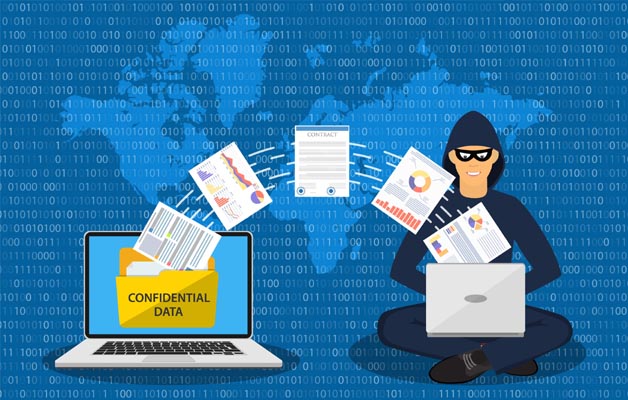10 biggest cyber threats to watch and how to stay protected in today’s online world. Learn risks, prevention tips, and smart digital safety strategies.
The 10 biggest cyber threats to watch today include phishing, ransomware, malware, social engineering, insider threats, IoT risks, DDoS attacks, and more. Understanding these dangers helps you stay safe and protect your data.
Have you ever wondered how safe your personal data really is online? With technology advancing faster than ever, cybercriminals are continuously finding new ways to exploit weaknesses. The digital world offers convenience, but it also comes with risks that can affect individuals, businesses, and even governments.
The main goal of this article is to highlight the 10 biggest cyber threats happening right now and explain how to stay ahead of them. Whether you’re a casual internet user or managing an organization, understanding these threats is your first line of defense.
10 Biggest Cyber Threats To Watch
Understanding Modern Cyber Threats 🔒
Cyber threats have grown more sophisticated over time. Attackers no longer rely on simple tricks; they now use advanced tools, automation, and artificial intelligence to break into systems.
Many of these attacks are silent, meaning victims often don’t realize something is wrong until damage has already been done. Personal data, financial details, and business secrets are often targeted because of their high value. As more of our lives move online, the need to stay informed becomes critical.
Cybersecurity isn’t just a business concern. It affects everyone—students, families, professionals, and organizations of all sizes. Knowing what to watch out for makes you far less likely to become a victim.
Phishing Attacks 🎣
Phishing is one of the most common cyber threats today. It happens when someone tries to trick you into giving up personal information by pretending to be a trusted source. These messages often look like emails from banks, delivery companies, or even social media sites.
Phishing attacks work because they play on urgency—“Your account is locked, click here!” When people panic, they tend to act quickly without thinking. Once you click a malicious link, attackers may steal your login credentials or infect your device.
Always double-check emails before responding. Look at the sender’s actual email address, not just the display name. Never click on suspicious links or download unexpected attachments.
Ransomware Threats 💰
Ransomware is a type of malware that locks your files and demands payment to unlock them. This type of threat can shut down hospitals, schools, and companies within minutes. Once ransomware spreads, it can be extremely difficult to remove without losing data.
Attackers usually demand payment in cryptocurrency, making it harder to trace. Even if a victim pays, there’s no guarantee they’ll get their data back. That’s why backups are essential. When you have secure backups, you can restore systems without paying criminals.
Organizations and individuals should regularly update systems and use strong antivirus tools to reduce ransomware risk.
Malware Infections 🦠
Malware refers to any malicious software created to damage systems or steal data. It can spread through email attachments, infected apps, or unsafe websites. Some malware records keystrokes to capture passwords, while others spy on your activities silently.
Once malware enters a device, it can remain hidden for a long time. You may not notice anything wrong at first. That’s what makes it so dangerous. Regular anti-malware scans help detect and remove threats before they cause serious harm.
Avoid downloading software from unknown sources. Stick with verified platforms and always look for user reviews.
Common Signs of Malware Infection
| Sign | What It Means | Recommended Action |
| Slow computer | Hidden app using resources | Run antivirus scan |
| Unexpected pop-ups | Adware infection | Remove suspicious extensions |
| Programs crashing | System compromise | Restart & scan system |
Social Engineering Scams 🧠
Social engineering is when attackers trick people into giving up information rather than hacking systems directly. This works because human trust can sometimes be easier to manipulate than technology.
These scams often involve fake calls, emotional manipulation, or pretending to be someone in authority. For example, someone may pretend to be from your bank and ask to “verify details.” This is a red flag.
Training, awareness, and skepticism are your best defenses. If something feels off, it probably is.
Insider Threats 🏢
Insider threats come from people within an organization. These could be employees, contractors, or partners. Some insiders intentionally steal information, while others cause damage accidentally.
Companies often focus on outside attackers, forgetting that insiders already have access. Proper access controls and activity monitoring are essential to reduce this risk.
Strong company policies, training, and limited permissions help reduce insider threat exposure.
Zero-Day Vulnerabilities ⏳
A zero-day vulnerability is a security flaw in software that developers don’t know about yet. Cybercriminals discover and exploit these weaknesses before they can be fixed.
These attacks are serious because they are unpredictable. Software companies constantly release updates and security patches to reduce these gaps.
Updating devices immediately when new patches are released is one of the best ways to protect yourself from zero-day threats.
Distributed Denial-of-Service (DDoS) Attacks 🌐
DDoS attacks overload websites or servers with massive traffic, making them crash or become unavailable. Businesses that rely on online services—such as banks or e-commerce sites—can lose revenue and credibility when this happens.
Attackers often use networks of infected devices, called botnets, to carry out these attacks. Preventing DDoS attacks requires specialized cybersecurity tools.
Individuals rarely face DDoS attacks directly, but businesses must be prepared to handle them quickly.
DDoS Attack Levels
| Attack Scale | Impact | Typical Target |
| Small | Temporary slowdown | Small websites |
| Medium | Service outage | Online businesses |
| Large | Critical downtime | Banks, government networks |
IoT Security Risks 🔗
The Internet of Things (IoT) includes smart home devices like security cameras, smart TVs, and voice assistants. These devices make life easier, but many of them lack strong security features.
Hackers can take control of IoT devices and use them to spy, steal data, or launch attacks. Changing default passwords and updating firmware helps reduce these risks.
Before buying new smart devices, always check whether the brand is known for strong security.
Cloud Security Breaches ☁️
Cloud storage services are widely used today. While they offer convenience, they can also be vulnerable if not properly secured. Misconfigured cloud settings are one of the biggest causes of data leaks.
Businesses must enforce strict access control and encryption policies. Individuals should use two-factor authentication for cloud accounts.
Choosing reputable cloud providers and reviewing security settings regularly makes a big difference.
Credential Stuffing & Password Attacks 🔑
Credential stuffing happens when attackers use stolen username-password pairs to try logging into multiple websites. If someone uses the same password everywhere, this attack becomes easy.
Using strong, unique passwords for each account is essential. A password manager can help keep track of them.
Enable multi-factor authentication (MFA) whenever possible. It adds an extra layer of security, even if your password is leaked.
Deepfake & AI-Driven Fraud 🤖
AI technology has made it possible to create realistic fake audio, video, and photos. Cybercriminals use deepfakes to impersonate others, manipulate public perception, or commit fraud.
These attacks are particularly dangerous in business settings. For example, a CEO’s voice could be cloned to approve a fake money transfer.
Organizations must verify requests carefully and educate employees on this growing risk.
AI-Driven Threat Examples
| Threat Type | Description | Risk Level |
| Deepfake Voice | Impersonates trusted individuals | High |
| Fake Video | Manipulates public perception | High |
| AI Malware | Adapts to avoid detection | Very High |
Mobile Device Threats 📱
Smartphones store personal messages, banking apps, and business data. This makes them prime targets for cybercriminals. Mobile malware often hides inside fake apps.
Public Wi-Fi is another major risk. Attackers can intercept data on unsecured networks. Always use a VPN when connecting to public Wi-Fi.
Keep your phone updated and avoid downloading apps from unknown sources.
Supply Chain Cyber Attacks 🔄
Supply chain attacks happen when hackers target third-party vendors or service providers to reach a bigger target. This method is effective because companies rely heavily on external partners.
Businesses must verify the security practices of all vendors. A weak link in the chain can compromise everything.
Stronger vendor screening and regular audits help prevent supply chain attacks.
Critical Infrastructure Risks ⚡
Critical systems like power grids, water supply networks, and healthcare facilities are increasingly connected to the internet. This makes them major targets for cyber terrorists and hostile governments.
Disrupting these systems can cause widespread harm. Governments and organizations must invest in advanced cybersecurity protection.
Cooperation between countries and agencies is required to improve defense strategies globally.
How To Protect Yourself & Your Organization 🛡️
Protecting yourself from cyber threats doesn’t have to be complicated. Small steps make a big difference.
Smart Security Practices:
- Use strong and unique passwords.
- Turn on multi-factor authentication.
- Avoid clicking suspicious links or attachments.
- Update devices and software regularly.
- Backup data often.
Cybersecurity awareness is your strongest shield. Stay informed and stay prepared. 🛡️
Conclusion
The digital world is full of opportunities, but also risks. Understanding the 10 biggest cyber threats helps you stay ahead of attackers and protect your data, devices, and privacy. Whether you’re a business owner or an everyday user, taking proactive steps now can prevent serious damage later.
Cybersecurity isn’t a one-time task—it’s an ongoing habit. Start today.
FAQs
What is the biggest cyber threat today?
Phishing and ransomware remain the top threats due to how easily they spread. Attackers use emotional manipulation to trick victims. Staying cautious online can prevent most attacks.
How can I protect my personal data online?
Use strong passwords, avoid suspicious links, and enable multi-factor authentication. Regular updates and secure backups also help. Being alert is key.
Why do cyber attacks keep increasing?
Technology evolves quickly, giving attackers new tools. More people are online, meaning more targets. Cybersecurity awareness must keep improving.
Are smartphones easy to hack?
Yes, especially if you install unknown apps or use unsecured Wi-Fi. Keeping your phone updated and using trusted apps reduces risk. VPNs help protect data.
What is ransomware and how does it work?
Ransomware locks your data and demands payment to unlock it. Attackers often use email or downloads to infect systems. Backups and security software offer strong protection.



Leave a Reply